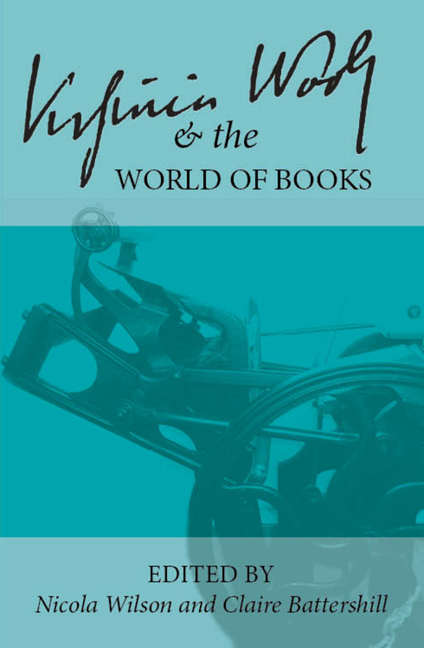 Virginia Woolf and the World of Books
Virginia Woolf and the World of Books Book contents
- Frontmatter
- Contents
- Introduction
- List of Abbreviations
- Keynote
- In the Archives
- Craftsmanship
- The Hogarth Press
- Hours in A Library
- The Art of the Book
- The Art of the Narrative
- Making New Books: Creative Approaches
- Queer Woolf: Queer Approaches and Creative-Critical Research
- Following Virginia Woolf's Call for a Press of One's Own: Making Waves Press Launches Judith's Room
- Thinking Is Our Fighting: How to Read and Write Like Woolf in the Age of Trump
- The Book in the World: Woolf's Global Reception
- Editing and Teaching Woolf
- Intertextuality
- Lives in Writing
- Notes on Contributors
Queer Woolf: Queer Approaches and Creative-Critical Research
from Making New Books: Creative Approaches
- Frontmatter
- Contents
- Introduction
- List of Abbreviations
- Keynote
- In the Archives
- Craftsmanship
- The Hogarth Press
- Hours in A Library
- The Art of the Book
- The Art of the Narrative
- Making New Books: Creative Approaches
- Queer Woolf: Queer Approaches and Creative-Critical Research
- Following Virginia Woolf's Call for a Press of One's Own: Making Waves Press Launches Judith's Room
- Thinking Is Our Fighting: How to Read and Write Like Woolf in the Age of Trump
- The Book in the World: Woolf's Global Reception
- Editing and Teaching Woolf
- Intertextuality
- Lives in Writing
- Notes on Contributors
Summary
According to the Oxford English Dictionary Arnold Bennett, no less, the famed pantomime rival of Bloomsbury, is the earliest source in Britain of queer's modern “chiefly derogatory” usage. He uses it in a diary entry of 26 March 1915 (published in 1932)—although it is difficult to assess how derogatory, if at all, this instance is: “An immense reunion of art students, painters, and queer people. Girls in fancy male costume, queer dancing, etc.” (OED; Bennett 550).
Turning to the source, we discover that the evening in question was a thoroughly Bloomsbury affair, involving a visit to an exhibition of radical art by the London Group (“some nice things but all imitative”), and thence to dinner with Lady Ottoline Morrell where Bennett finds “Lowes Dickinson, Bertrand Russell, Whitehouse. All these very much upset by the war, convinced that the war and government both wrong, etc.” (Bennett 127). Having witnessed the Bloomsbury related art and pacifism that inform many of the contributions to Queer Bloomsbury, Bennett's account of his evening with the Morrells concludes with a glimpse of Bloomsbury masquerade, orientalism and queer sexualities too:
Afterwards, an immense reunion of Art Students, painters, and queer people. Girls in fancy male costume, queer dancing etc. A Japanese dancer. We left at 12.15. Pianola. Fine pictures. Glorious drawings by Picasso. Excellent impression of host and hostess. (Bennett 127)
The “queer people” on this occasion did not include Virginia Woolf whose debut novel, The Voyage Out, was published the day after this party (i.e. 26 March 1915) and who was convalescing in a nursing home following a bout of mental illness, but it seems likely that her sister and other Bloomsbury members were present. Her novel, which incidentally Vanessa Bell on its publication described as “a queer business” (Spalding VB 137), “appeared amid a season of unparalleled gaiety,” according to Frances Spalding, when “[a]s if in defiance of the war, Lady Ottoline Morrell was holding parties every Thursday” (Spalding VB 137).
- Type
- Chapter
- Information
- Virginia Woolf and the World of BooksSelected Papers from the Twenty-seventh Annual International Conference on Virginia Woolf, pp. 162 - 188Publisher: Liverpool University PressPrint publication year: 2018
